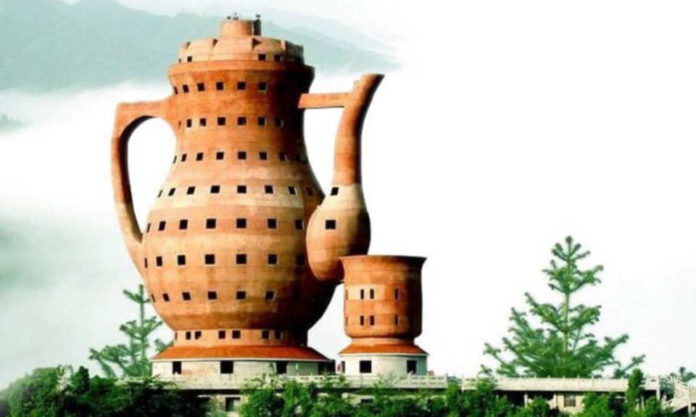“After drinking my local tea, you won’t be able to walk in a straight line.”
That’s how I was introduced to this tea. It was a generous, proud young friend that set the challenge.
By “local”, she meant Guizhou. I was surprised; Guizhou is not known as a tea place.
The province is infinitely more famous for its hard liquor, tobacco and coal. On paper, it sounds like a dirty, hard-living kind of place. But it also enjoys its share of beautiful scenic attractions and ethnic communities. The capital, Guiyang, has been branded “the Hong Kong of West China”.
I’ve not been. It remains an aspiration. But, thanks to this friend, I have two types of Guizhou tea; one green, one red.
She described her challenge to me with barely a smile, certainly not a laugh. It confused me. How can tea prevent people walking straight? Does she propose to infuse it in the famous Moutai (茅台) liquor? Was I expected to smoke the leaves?
- Perfect Median; China’s Take on Earl Grey
- Swallowing is Just the Beginning; Rain, Flower, Cloud!
- Sugar-Free Bottled Tea; China’s Wu Tang Clan
My guess was that she was describing some form of caffeine rush rodeo. And there I fancied my chances. That’s the kind of bucking bronco the writer of Strainer feels qualified to ride.
The first of these teas (the red) comes from Zunyi (遵义) city, halfway between the capital and the Sichuan border. Yunnan lies just to the west. The stunning Shizhangdong waterfalls are nearby. And there’s Hailongtun Fortress, which China Daily last year breathlessly compared with Loch Ness and Urquhart Castle. It’s beautiful; I know because I’ve seen a video.
And I declare this a fine red tea, more complex and savoury than my beloved Yunnanese Dian Hong (滇红), actually more like a Fujianese Jin Jun Mei (金骏眉).
But the “intoxicating” tea she described to me is the green, also from Zunyi County. Called Meitan Cuiya (湄潭翠芽), it is actually old enough (or some ancestor of it, anyway) to have been praised in Lu Yu’s Tea Monograph. Meitan town has a teapot-shaped museum claiming (justifiably) to be the world’s largest tea monument. There’s also a claim (perhaps less justifiable) to be the birthplace of green tea itself. The “Mei” (湄) character is the Mekong river, which flows beneath the tea field.
- Which Tea Brand Best Compliments Your Private Jet?
- Long Time, Long Jing No See
- Happy Lemon; Drink it Like a Russian
The leaves’ appearance makes an impression. Chunky and shiny. Only Sichuan’s Bamboo Leaf Tea (竹叶青茶) so closely resembles green candy. The aroma from the dry leaves is fruity, with a strong hint of that flavour-enhancing ingredient in latiao (拉条) snacks or tianmian sauce (甜面酱). Is that natural to the leaves?
Anyway, it makes no impression on the infusion, which first reminds of wheat tea (大麦茶). It’s a toasty taste, the opposite of fruity. The pretty leaves stand up obediently in the water and, boy, do they grow! A tiny serving eventually fills a glass; it’s as if they had previously been salted.
But you don’t care about the flavour, do you? All you want to know is whether I fell off the road.
Sadly, I feel completely unaffected, even after chasing green with red. But I do feel satisfied to have tried two unique, enjoyable new teas. And I’ve now more incentive to search out other Guizhou varieties, such as Duyun Mao Jian (都匀毛尖).









